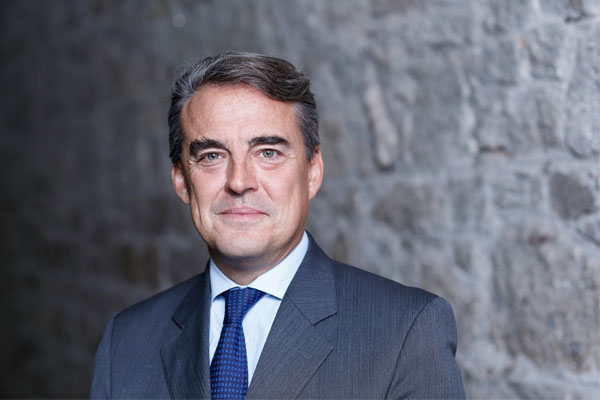“That is why we continue to remind that relief measures must extend beyond the initial emergency situation. Cost reduction in any form will be critical—reduced charges, taxes, user fees or administrative burdens like slot use it/lose it rules“, said Alexandre de Juniac, IATA’s Director-General.
Remarks of Alexandre de Juniac at the IATA Media Briefing on COVID-19.
"Good afternoon from Geneva. And thank you for again joining this weekly call.
David Rockland has presented some of the insights that we have gleaned from a passenger survey that we have been conducting every few months in this crisis. We are now at the stage where some parts of the world are starting to open-up—Asia and Europe. Understanding the concerns of travelers is important because their willingness to travel will drive the recovery.
There are a few key messages that I see in the survey results.
The first is that, as we have discussed in this call before, we can expect that this crisis will have a long shadow. Fewer passengers are saying that they will travel again in the first months after the pandemic subsides. In early April 61% said that they would. By early June that fell to 45%. And about two thirds are seeing less travel in their future—be it for vacation, visiting friends/relatives or business.
That is why we continue to remind that relief measures must extend beyond the initial emergency situation. Cost reduction in any form will be critical—reduced charges, taxes, user fees or administrative burdens like slot use it/lose it rules.
The second message is that passengers will not travel if governments impose quarantine. This week we have seen the UK and the EU adopt or announce alternatives for what are perceived as low-risk destinations. Other destinations are using testing as a screening methodology—although doing this accurately, quickly and at scale still poses challenges. And, the more countries implement the ICAO Take-off guidelines, the better deterrence we will have to symptomatic travelers because of health checks and declarations. On top of this, airlines are offering flexibility in re-booking, so there is no economic incentive to travel when sick.
As testing becomes faster, more accurate and scalable, pre-travel detection of pre-symptomatic and asymptomatic travelers will become possible, particularly from locations perceived to be higher risk. The science for testing is advancing quickly, but we are still not where we need to be.
Of course, there is still the need for general anti-COVID-19 measures in country—social distancing and contact tracing. Outbreaks involving travelers can be managed using the same methodologies as are used for the general population. We are seeing governments becoming more precise and targeted with these measures to limit the economic damage.
The third message is that the ICAO Take-off guidelines go far to addressing travelers’ main concerns for sanitization and human interaction. Masks or face coverings address the difficulty of social distancing in public spaces, including while on board aircraft. Human interaction is being minimized with contactless processes. And deeper and more frequent sanitization will address critical concerns for many high touch areas, including washrooms and toilets.
It is also clear that we have to do better at getting out the message on two fundamental issues:
That the aircraft cabin is one of the most controlled environments that people could experience. First, risk is reduced by screening our symptomatic travelers. Then air is exchanged with fresh air from outside every two or three minutes on most aircraft. That’s 20 to 30 times more frequently than most office buildings. And HEPA filters take out viruses—including the coronavirus—with each filtration.
The second is that, while effective social distancing on board is not possible (even neutralizing the middle seat from sale does not create the recommended 1m-1.5m distance), a layering of measures will keep travelers safe. Again, we screen out symptomatic travelers before they get to the aircraft and require everybody to wear a mask or facial cover. The mask requirement is the general advice of governments for areas where social distancing is not possible, like public transport. And on top of that there are several design features that limit the spread of virus-carrying droplets on board. Movement of air forward and aft in the cabin is limited by seat backs and a ceiling to floor air flow. And with everybody oriented forward, there is limited face-to-face contact.
Passenger confidence will not be re-built overnight. We will need to keep reinforcing these messages as we move forward. But I am hopeful that, as people start to travel again, we will build up some momentum.
With Europe’s internal borders now largely open, I took my first trip to Paris by plane. Wearing a mask, keeping a distance and avoiding contact does make travel different. But the level of cooperation among travelers was very high. So the processes worked. With time, travelers will become more used to these measures (although we hope that they will be temporary). And airports and airlines will become even better at managing people flows.
Yes, the trip felt different. But the changes were no great hardship. If that is the price for the freedom to travel, count me in!
On that note, I am happy to take your questions."





































































































































































